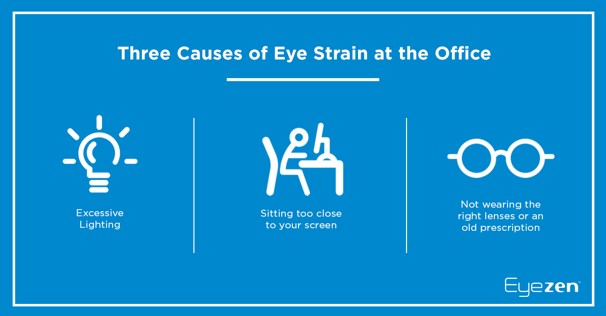
If you look through my previous posts, you’ll see last year I posted information on the solar eclipse and eye damage from the sun and laser pointers….”Don’t stare at the sun” is universal knowledge.
But one thing we may not know, or know entirely is what does the light being emitted from digital devices do to our eyes? HEV (high energy visible) light is near ultraviolet wavelength light that is present in sunlight. You can see this same light in our smartphones, tablets, compact fluorescent lights, LEDs to name a few. Traditionally when the sun went down our exposure to HEV was near zero. Presently we are exposed to blue light every waking hour – an all time high for our species.
Definitive research shows a relationship between blue light exposure and eye damage, disrupted sleep patterns, eyestrain and headaches, blindness from cataracts and macular degeneration are all possible. This damage comes from 3 main sources; UV-A, UV-B and HEV. Research also shows limiting this damage has a protective effect.*(see footnotes below from Gregory Good O.D., Ph.D.)

How to protect ourselves and at what age to begin?
Research proves that the very young will benefit from HEV protection as will adults. Also cumulative exposure over a lifetime contributes to eye damage later in life so start now! Outdoors this can be done with wide brim hats. In the snow and on white sandy beaches sunglasses known to protect the eyes from 100% UV-A & UV-B rays will be best. When driving it is important to be sure the lenses meet ANSI Z80.3 standard so drivers can still discriminate Green, Yellow and Red (traffic lights). Grey tint tends to do this the best.
Transition lenses have come a long way in color changing properties and can be a solution both indoors and outdoors.

Indoors, certain lens materials naturally protect from UV-A & UV-B light Polycarbonate blocks UV-A & UV-B plus it has intrinsic “shatter proof” qualities. A material called “Trivex” also does this and is impact resistant as well. Couple these materials with blue light coating, Antireflective coating and scratch resistance coating and patients will have quality lenses that are protective and as durable as possible.
For children, tinted sunglasses made from Polycarbonate or Trivex would be an excellent option.
Certain contact lenses have UV protection incorporated into them. Contacts have an advantage as they can protect our eye from incident light coming from any direction (Sunglasses allow light to peek in around the lenses) but remember that contact lenses provide NO protection from HEV or blue light. As before, quality sunglasses over contact lenses will help protect us from the HEV or “blue light” as well.

For more information click here ->Sunglasses and UV light
*Footnote
- Salisbury Eye Evaluation (West et al. J Am Med Assoc. 1998; 280:714)
- Blue Mountains Eye Study (Mitchell et al. Ophthalmology 1997)
- Ham et al. (Nature 1976; 260:153)
- Tomany et al. Arch Ophthalmol 2004;122:246)
- Taylor et al. (Arch Ophthalmol1992; 110:99)
- Roberts. J Photochem (Photobiol B. 2001; 64:136)
Additionally, studies have shown using a hat or sunglasss decreased the risk of early ARM changes by nearly 50%
Have a great May!
-Dr. Meers